Abstract
Potential public health effects associated with exposure to metal emissions from hazardous waste incinerators through noninhalation pathways were evaluated. Instead of relying on modeling the movement of toxicants through various environmental media, an approach based on estimating changes from baseline levels of exposure was employed. Changes in soil and water As, Cd, Hg, Pb, Cr, and Be concentrations that result from incinerator emissions were first determined. Estimates of changes in human exposure due to direct contact with shallow soil or the ingestion of surface water were then ascertained. Projected changes in dietary intakes of metals due to incinerator emissions were estimated based on changes from baseline dietary intakes that are monitored in U.S. Food and Drug Administration total diet studies. Changes from baseline intake were deemed to be proportional to the projected changes in soil or surface water metal concentrations. Human exposure to metals emitted from nine hazardous waste incinerators were then evaluated. Metal emissions from certain facilities resulted in tangible human exposure through noninhalation pathways. However, the analysis indicated that the deposition of metals from ambient air would result in substantially greater human exposure through noninhalation pathways than the emissions from most of the facilities.
Full text
PDF
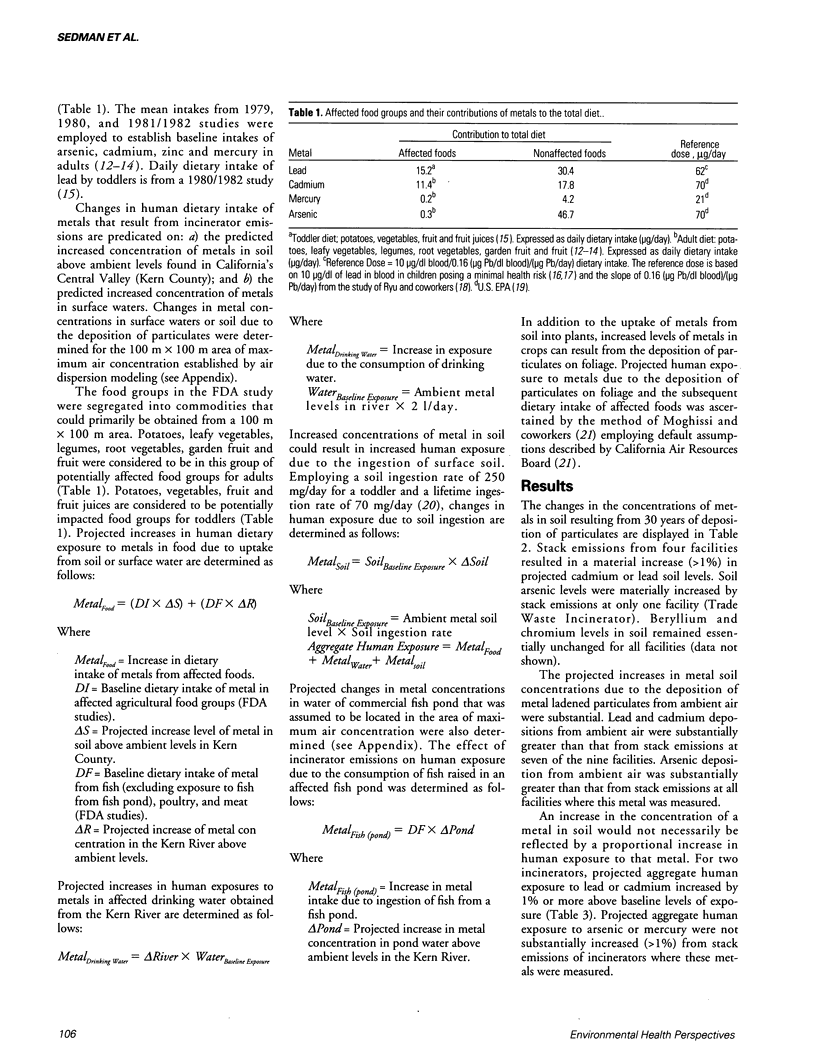
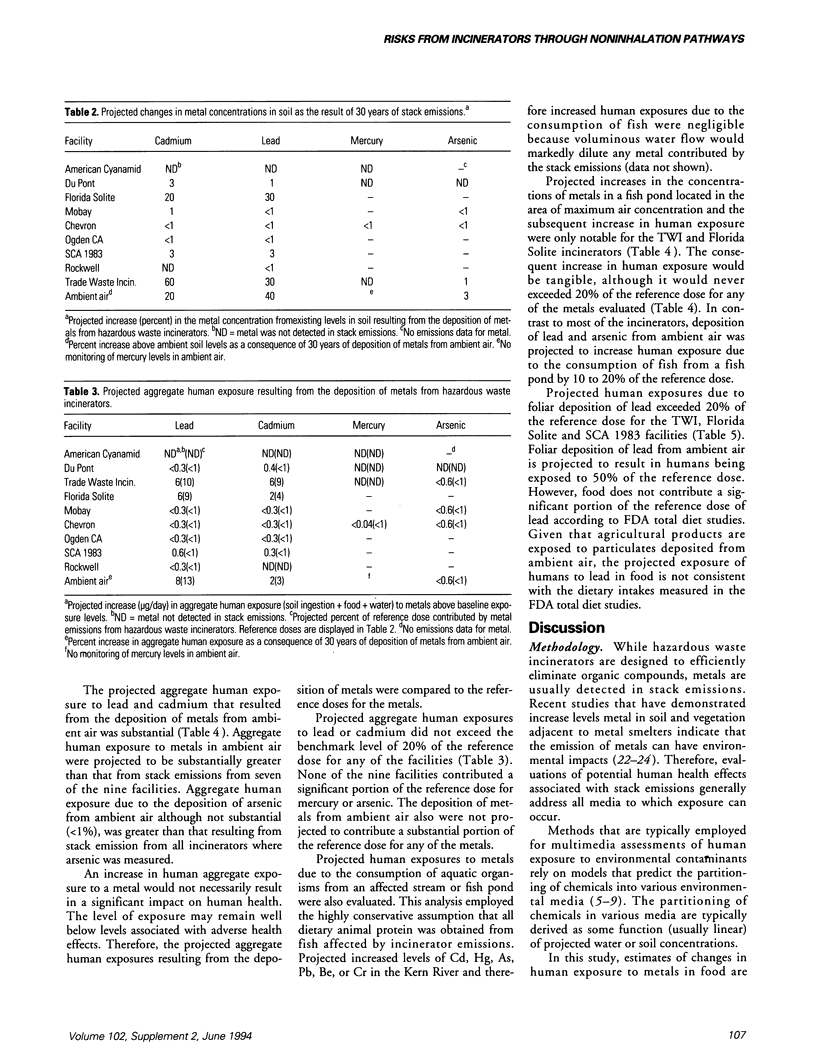

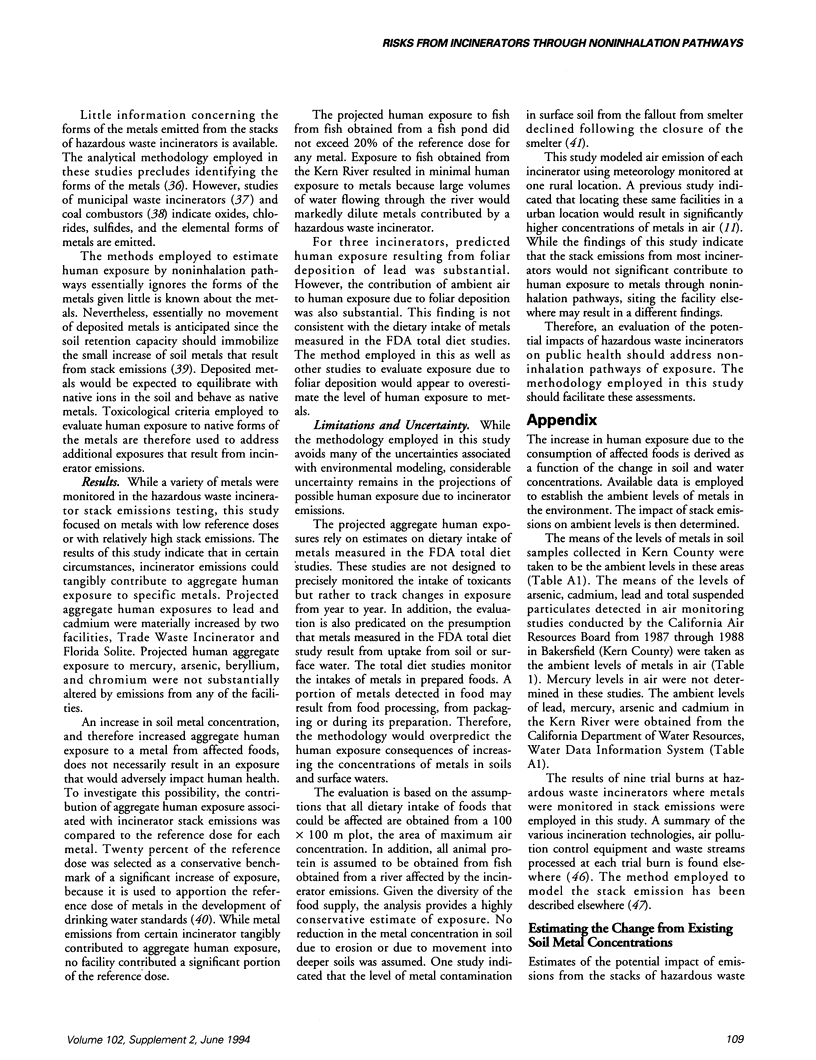
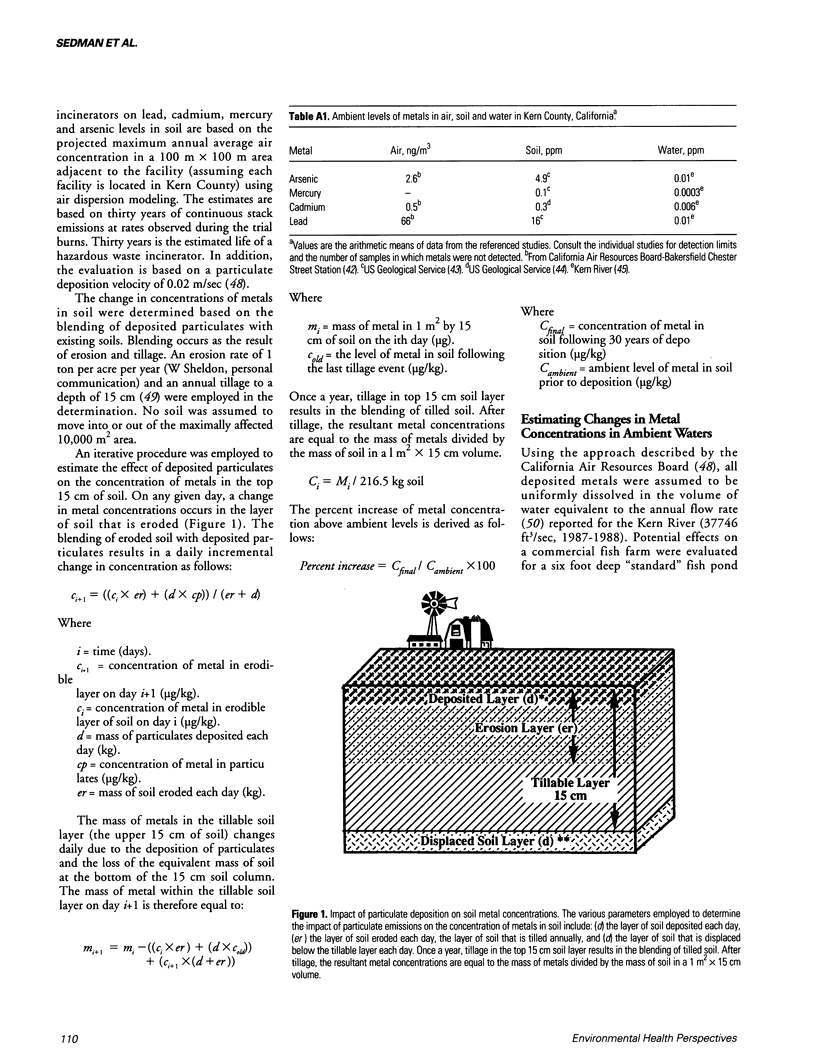
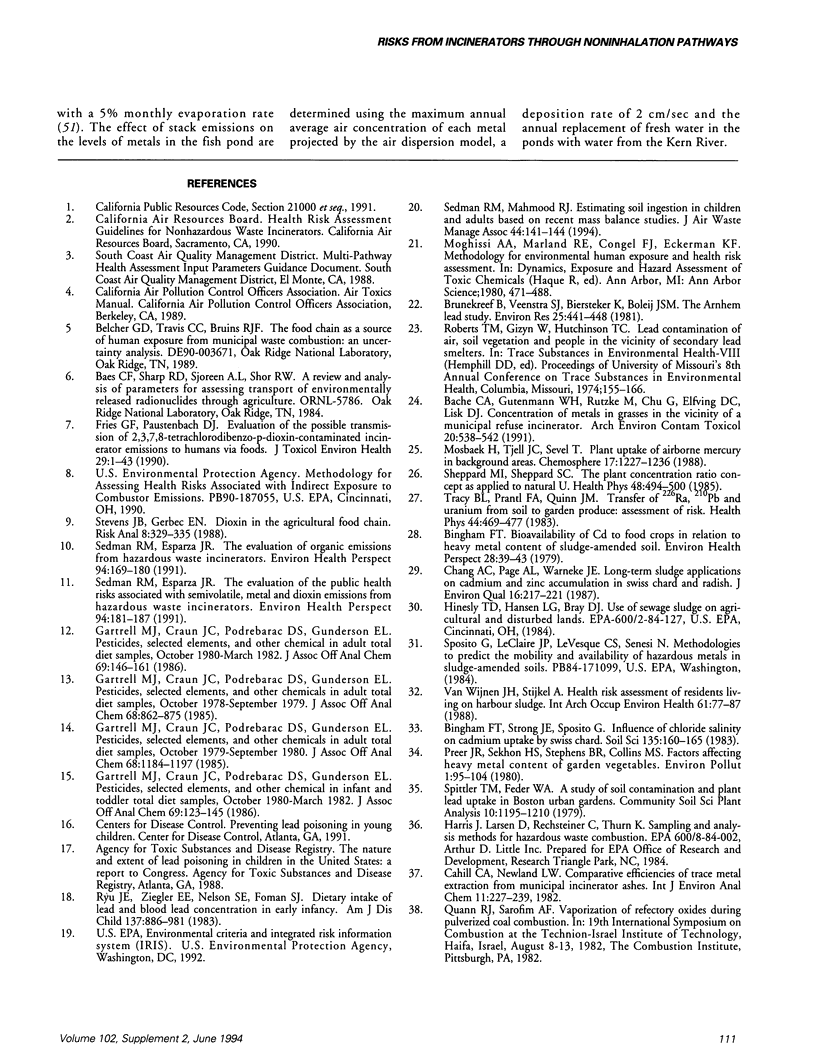
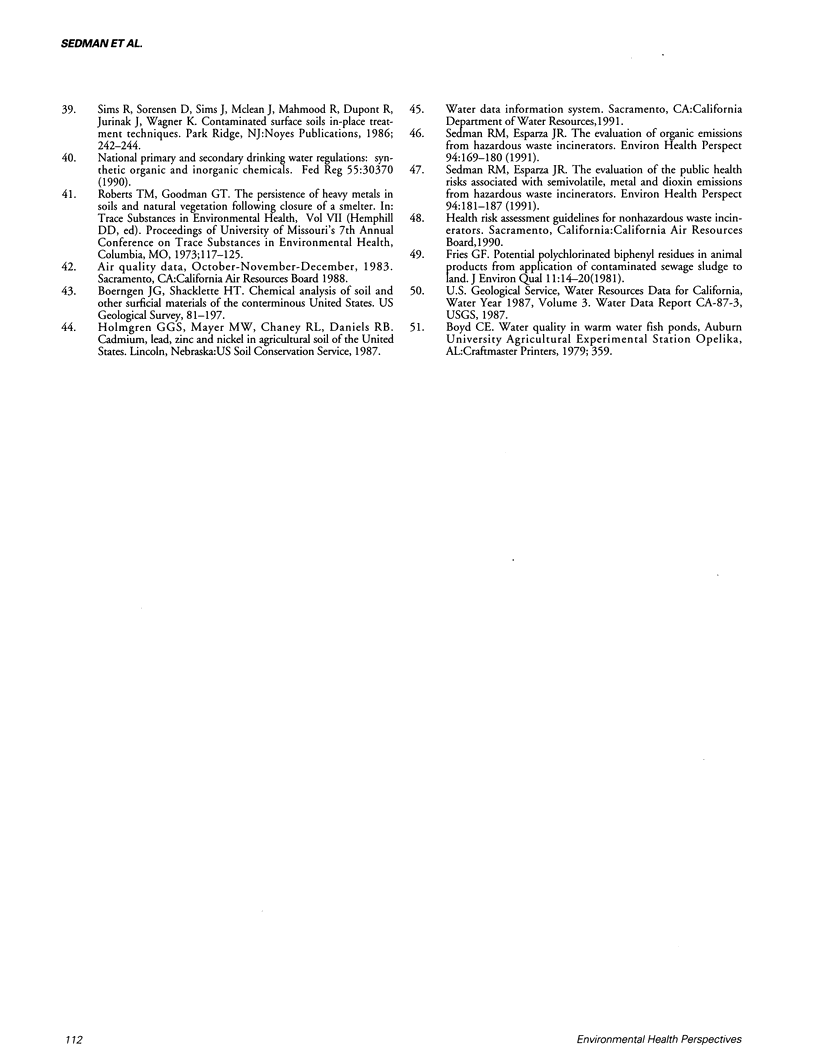
Selected References
These references are in PubMed. This may not be the complete list of references from this article.
- Bingham F. T. Bioavailability of Cd to Food crops in relation to heavy metal content of sludge-amended soil. Environ Health Perspect. 1979 Feb;28:39–43. doi: 10.1289/ehp.792839. [DOI] [PMC free article] [PubMed] [Google Scholar]
- Brunekreef B., Veenstra S. J., Biersteker K., Boleij J. S. The Arnhem Lead Study. I. Lead uptake by 1- to 3-year-old children living in the vicinity of a secondary lead smelter in Arnhem, The Netherlands. Environ Res. 1981 Aug;25(2):441–448. doi: 10.1016/0013-9351(81)90047-5. [DOI] [PubMed] [Google Scholar]
- Fries G. F., Paustenbach D. J. Evaluation of potential transmission of 2,3,7,8-tetrachlorodibenzo-p-dioxin-contaminated incinerator emissions to humans via foods. J Toxicol Environ Health. 1990;29(1):1–43. doi: 10.1080/15287399009531369. [DOI] [PubMed] [Google Scholar]
- Gartrell M. J., Craun J. C., Podrebarac D. S., Gunderson E. L. Pesticides, selected elements, and other chemicals in adult total diet samples, October 1978-September 1979. J Assoc Off Anal Chem. 1985 Sep-Oct;68(5):862–875. [PubMed] [Google Scholar]
- Gartrell M. J., Craun J. C., Podrebarac D. S., Gunderson E. L. Pesticides, selected elements, and other chemicals in adult total diet samples, October 1979-September 1980. J Assoc Off Anal Chem. 1985 Nov-Dec;68(6):1184–1197. [PubMed] [Google Scholar]
- Gartrell M. J., Craun J. C., Podrebarac D. S., Gunderson E. L. Pesticides, selected elements, and other chemicals in adult total diet samples, October 1980-March 1982. J Assoc Off Anal Chem. 1986 Jan-Feb;69(1):146–159. [PubMed] [Google Scholar]
- Gartrell M. J., Craun J. C., Podrebarac D. S., Gunderson E. L. Pesticides, selected elements, and other chemicals in infant and toddler total diet samples, October 1980-March 1982. J Assoc Off Anal Chem. 1986 Jan-Feb;69(1):123–145. [PubMed] [Google Scholar]
- Rye J. E., Ziegler E. E., Nelson S. E., Fomon S. J. Dietary intake of lead and blood lead concentration in early infancy. Am J Dis Child. 1983 Sep;137(9):886–891. [PubMed] [Google Scholar]
- Sedman R. M., Esparza J. R. Evaluation of the public health risks associated with semivolatile metal and dioxin emissions from hazardous waste incinerators. Environ Health Perspect. 1991 Aug;94:181–187. doi: 10.1289/ehp.94-1567951. [DOI] [PMC free article] [PubMed] [Google Scholar]
- Sedman R. M., Esparza J. R. Evaluation of the public health risks associated with semivolatile metal and dioxin emissions from hazardous waste incinerators. Environ Health Perspect. 1991 Aug;94:181–187. doi: 10.1289/ehp.94-1567951. [DOI] [PMC free article] [PubMed] [Google Scholar]
- Sedman R. M., Esparza J. R. Evaluation of volatile organic emissions from hazardous waste incinerators. Environ Health Perspect. 1991 Aug;94:169–180. doi: 10.1289/ehp.94-1567964. [DOI] [PMC free article] [PubMed] [Google Scholar]
- Sedman R. M., Esparza J. R. Evaluation of volatile organic emissions from hazardous waste incinerators. Environ Health Perspect. 1991 Aug;94:169–180. doi: 10.1289/ehp.94-1567964. [DOI] [PMC free article] [PubMed] [Google Scholar]
- Sedman R. M., Mahmood R. J. Soil ingestion by children and adults reconsidered using the results of recent tracer studies. Air Waste. 1994 Feb;44(2):141–144. doi: 10.1080/1073161x.1994.10467242. [DOI] [PubMed] [Google Scholar]
- Stevens J. B., Gerbec E. N. Dioxin in the agricultural food chain. Risk Anal. 1988 Sep;8(3):329–335. doi: 10.1111/j.1539-6924.1988.tb00495.x. [DOI] [PubMed] [Google Scholar]
- van Wijnen J. H., Stijkel A. Health risk assessment of residents living on harbour sludge. Int Arch Occup Environ Health. 1988;61(1-2):77–87. doi: 10.1007/BF00381611. [DOI] [PubMed] [Google Scholar]


